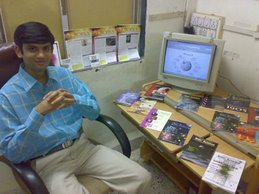In order to fit a 20,000 kg (45,000 pound) infrared observatory into the aircraft, NASA had to cut a 5 metre (16 foot) hole in the back of the plane, near the tail. It now has a door that will slide back to reveal the telescope. The plane will eventually fly at an altitude of 12 km (40,000 feet), rising above most of the atmosphere's water vapour, and give the 2.5 metre (98.4 inch) telescope a clear view of the heavens. Another advantage is that the aircraft can be serviced and upgraded regularly, swapping in new instrumentation as technology improves. You can't do that with a space-based observatory.
For its next tests, SOFIA will transfer to its final home at NASA's Dryden Research Center at Edwards, California. It will then perform a series of flights until its science observations begin in 2009 or 2010.
Original Source: NASA News Release


No comments:
Post a Comment